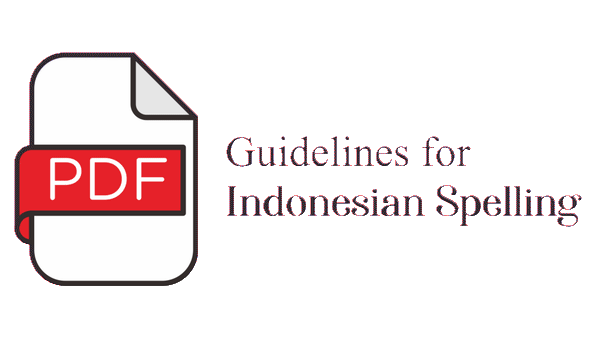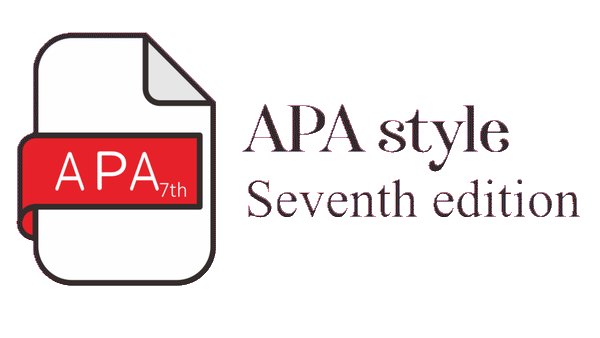OPTIMALISASI PENGEMBANGAN USAHA BUDI DAYA RUMPUT LAUT (Kappaphycus alvarezii) DI PERAIRAN TELUK KULISUSU KABUPATEN BUTON UTARA PROVINSI SULAWESI TENGGARA
Abstract
Pendekatan sistem untuk mengidentifikasi permasalahan dalam mengoptimalkan usaha budi daya rumput laut sangat penting dilakukan untuk meningkatkan kondisi perekonomian pembudi daya. Penelitian ini bertujuan menganalisis sistem usaha budi daya rumput laut di Perairan Teluk Kulisusu Kabupaten Buton Utara. Metode penelitian yang digunakan adalah metode survei dan wawancara, sebanyak 50 responden dan dilakukan di bulan Juli 2016. Model sistem dinamik yang dilakukan dibangun dan dikembangkan berdasarkan pada data–data empiris sistem teknologi budi daya yang ada, faktor-faktor ekologis perairan, faktor-faktor ekonomi dan sosial, serta faktor kelembagaan. Hasil penelitian menunjukkan bahwa potensi peningkatan produksi masih dapat dilakukan dengan mengoptimalkan pemanfaatan areal seluas 6.952 ha dengan tingkat kesesuaian lahannya; sesuai sebesar 2.030 ha, cukup sesuai sebesar 3.818 ha dan tidak sesuai sebesar 1.105 ha. Optimalisasi dilakukan dengan menambah jumlah bentangan tali serta penambahan bobot bibit tebar pada setiap jalur penanaman. Hasil analisis kebutuhan, formulasi masalah, identifikasi kerangka permasalahan sistem, dapat dilaksanakan secara berkelanjutan dengan memperhatikan beberapa aspek yaitu 1) Ekologi. 2) Ekonomi. 3) Sosial budaya. 4) Teknologi dan 5) Kelembagaan. Kelima aspek dengan beberapa hal dari setiap aspek harus dioptimalkan agar pengembangan budi daya rumput laut dapat berjalan secara optimal dan kontinu. Rekomendasi dari hasil yang diperoleh sebaiknya perlu pengupayaan pelaksanaan kajian spesifik kuantifikasi nilai ekonomi total sumber daya dan optimalisasi kebijakan rumput laut.
Tittle: Optimization of Seaweed Farming Development (Kappaphycus alvarezii) In The Waters of Kulisusu Bay of North Buton Regency, Southeast Sulawesi
A systems approach to identify problems in optimizing seaweed cultivation is very important to improve the economic conditions of farmers. This study aims to analyze the seaweed farming system in the waters of Kulisusu Bay, North Buton Regency. The research method used was survey and interview methods, as many as 50 respondents and was conducted in July 2016. The dynamic system model that was carried out was built and developed based on empirical data on existing cultivation technology systems, aquatic ecological factors, economic factors. and social, as well as institutional factors. The results showed that the potential for increased production could still be done by optimizing the utilization of an area of 6,952 ha with a land suitability level; in accordance with 2,030 ha, quite appropriate for 3,818 ha and not suitable for 1,105 ha. Optimization is carried out by increasing the number of rope stretches and increasing the weight of the seedlings in each planting path. The results of needs analysis, problem formulation, identification of system problem frameworks can be carried out in a sustainable manner by taking into account several aspects, namely 1) Ecology. 2) Economy. 3) Socio-culture. 4) Technology and 5) Institutional. The five aspects with several things from each aspect must be optimized so that the development of seaweed cultivation can run optimally and continuously. Recommendations from the results obtained should make efforts to carry out specific studies on the quantification of the total economic value of the resource and the optimization of seaweed policies.
Keywords
Full Text:
PDFReferences
Abreu, M., De Mattos, P., Lima, P., & Padula, A. (2011). Shrimp farming in coastal Brazil: reasons for market failure and sustainability challenges. Ocean Coast Manag, 54:658. doi: 10.1016/j.ocecoaman.2011.06.012.
Aguilera Morales, M., Casas Valdez, M., Carrillo Dom inguez, S., Gonzalez Acosta, B., & Perez Gil, F. (2005). Chemical composition and microbiological assays of marine algae Enteromorpha spp. as a potential food source. Journal of Food Composition and Analysis 18, 79–88. Available online: http://www.sciencedirect.com/science/article/pii/ S0889157504000122
Ajao, A.O., Ogunniyi, L.T., & Adepoju, A.A. (2012). Economic Efficiency of Soybean Production in Ogo-Oluwa Local Government Area of Oyo State, Nigeria. American Journal Experiment Agr, Vol 2(4) : 667-679. Retrieved from http://www.sciencedomain.org.
Badan Pusat Statistik (BPS). (2015). Statistik Ekspor Impor Indonesia 2015.
Badan Pusat Statistik (BPS) Kabupaten Buton Utara. (2016). Kabupaten Buton Utara Dalam Angka.
Brown, E.M., Allsopp, P.J., Magee, P.J., Gill, C.I.R., Nitecki,S., Strain, C.R., & Mc Sorley, E.M. (2014). Seaweed and human health. Nutrition Reviews, 72, 205–216. https://doi.org/10.1111/nure.12091
Dahuri (2011). Mengembangkan Industri Rumput Laut Secara Terpadu. Samudra, Edisi 93 Januari 2011.
Eriyanto. (2003). Ilmu Sistem: Meningkatkan Mutu dan Efektivitas Manajemen. Jilid 1. IPB Press. Bogor.
Eriyatno & Sofyar, F. (2007). Riset Kebijakan Metode Penelitian untuk Pascasarjana. IPB Press. Bogor.
FAO. (2015). Cultured Aquatic Species Information Programme: Eucheuma spp. Fisheries and Aquaculture Department.
Gil, M.N., Torres, A.I., Commendatore, M.G., Marinho, C., Arias, A., Giarratano, E., & Casas, G.N. (2015). Nutritive and xenobiotic compounds in the alien algae Undaria pinnatifida from Argentine Patagonia. Archives of Environmental Contamination and Toxicology, 68, 553–565.
Graham, M.H., Vásquez, J.A., & Buschmann, A.H. (2007). Global ecology of the giant kelp Macrocystis: from ecotypes to ecosistems. Oceanogr Mar Biol Annu Rev. 2007;45:39–88. Retrieved from https://pdfs.semanticscholar.org
Handoko, T. Hani (2005). Manajemen Personalia dan Sumber Daya Manusia. BPFE. Yogyakarta
Hardjomidjojo, H. (2004). Konsep Sistem. Bahan Kuliah Pasca Sarjana. Jurusan Teknologi Agroindustri, Institut Pertanian Bogor.
Hartrisari. (2007). Sistem dinamik. Konsep sistem dan pemodelan untuk industri dan lingkungan. SEAMEO BIOTROP.
Kementerian Kelautan dan Perikanan. (2010). Kelautan dan Perikanan dalam Angka 2010. Jakarta: Pusat data statistik dan informasi. Retrieved from http://statistik.kkp.go.id
Kementerian Kelautan dan Perikanan (KKP). (2013). Buku Saku: Informasi Rumput Laut. Direktorat Usaha dan Investasi Direktorat Jenderal Pengolahan dan Pemasaran Hasil Perikanan.
Manetsch, P.G.W. & Park. (1977). Sistem Analysis and Simulation with Application to Economic and Social Science. Michigan State University.
Marganof. (2007). Model Pengendalian Pencemaran Perairan di Danau Maninjau Sumatera Barat. Institut Pertanian Bogor. Bogor
Marimin. (2007). Teori dan Aplikasi Sistem Pakar dalam Teknologi Manajerial. IPB Press. Bogor.
Marroni, E.V., & Asmus, M.L.(2013). Historical antecedents and local governance in the process of public policies building for coastal zone of Brazil. Coast Ocean Manag, 76:30–37. doi: 10.1016/j.ocecoaman.2013.02.011
Mathieson, A.C. (1973) Seaweed aquaculture. Mar.Fish.Rev, 37(1):2–14. Retrieved from https://books.google.co.id
McHugh, D.J. (2002). Prospects for seaweed production in developing countries. FAO Fisheries Circular No. 968 FIIU/C968
Nyundo, M.K. (2017). Factor influencing women
entrepreneurship: the case of Kibuyuni and Mkwiro seaweed farmers in the coastal region of Kenya. Master Thesis, University of Nairobi. pp 92.
Oliveira, R.C. (2009). O panorama da aquicultura no Brasil: a prática com foco na sustentabilidade. Revista Intertox de Toxicologia. Risco Ambiental e Sociedade, Vol 2(1):71-89. Retrieved from https://www.pesca.pet
Rodrıguez, A.P, Mawhinney, T., Marie, D. & Suarez, L.E. (2011). Chemical composition of cultivated seaweed Ulva clathrata (Roth) C. Agardh. Food Chemistry, 129,491-498. http://www.sciencedirect.com/science/article/pii/S0308814611006704.
Soemarno. (2011). Model Pengembangan Kawasan Agribisnis Tebu. Bahan Kajian MK. Metode Perencanaan Pengembangan Wilayah.Universitas Brawijaya, Malang. Retrieved from http://marno.lecture.ub.ac.id
Valderrama, D.J.,Cai, N., Hishamunda., & N. Ridler. (2013). Social and economic dimensions of carrageenan seaweed farming. Fisheries and Aquaculture Technical Paper No. 580. Rome, FAO.
Valenti, W.C. (2008). Aqüicultura Brasileira é sustentável Palestra apresentada durante o IV Seminário Internacional de Aqüicultura, Maricultura e Pesca, Aquafair 2008, Florianópolis, 13–15 de maio de. pp 1–11 Retrieved from www.avesui.com/anais.
Vasquez, J.A.(1992). Lessonia trabeculata, a subtidal bottom kelp in northern Chile: a case of study for a structural and geographical comparison. In: Seeliger U, editor. Coastal plant communities of Latin America. San Diego Academic. pp. 77–89. Retrieved from https://www.semanticscholar.org
Vasquez, J.A. (1993). Natural mortality of giant kelp Macrocystis pyrifera affecting the fauna associated with its holdfasts. Pac Sci, 47:180–184. Retrieved from https://www.semanticscholar.org.
Vasquez, J.A., & Santelices, B.(1984). Comunidades de macroinvertebrados en discos de adhesión de Lessonia nigrescens en Chile central. Rev Chil Hist Nat, 57:131–154. Retrieved from https://www.semanticscholar.org.
Whistler, R. L., & J. N. Be Miller.(1993). Industrial Gums, Polysaccharides and Their Derivatives, 3th ed. New York: Academic Press, Inc. Retrieved from http://repository.ipb.ac.id
DOI: http://dx.doi.org/10.15578/jsekp.v16i1.8138
Indexed by:
-------------------------------------------------------------------------------------
Published by
Research Center for Marine and Fisheries Socio-Economic
in collaboration with
Indonesian Marine and Fisheries Socio-Economics Research Network

This work is licensed under a Creative Commons Attribution-NonCommercial-ShareAlike 4.0 International License.


















